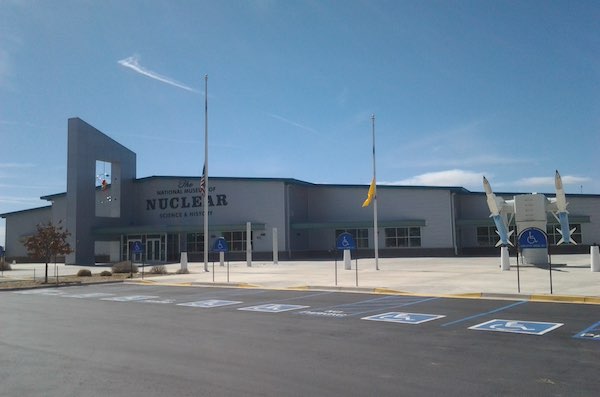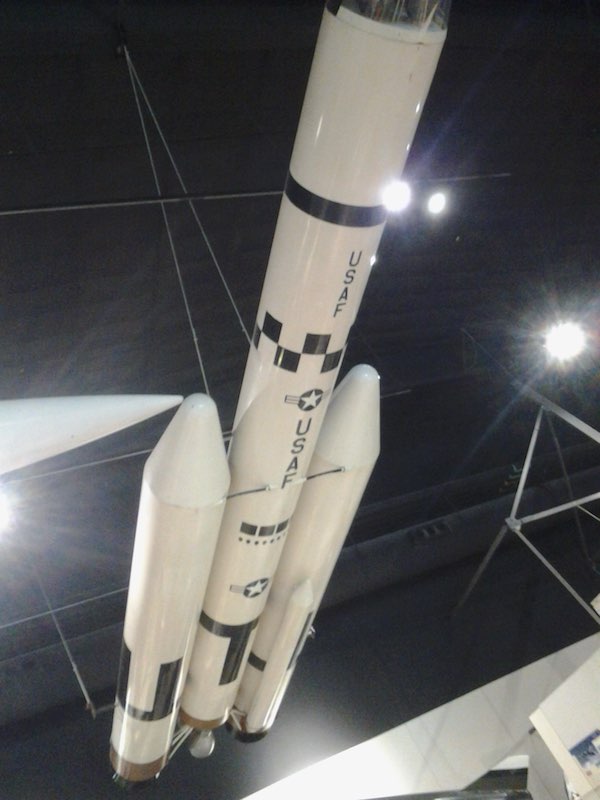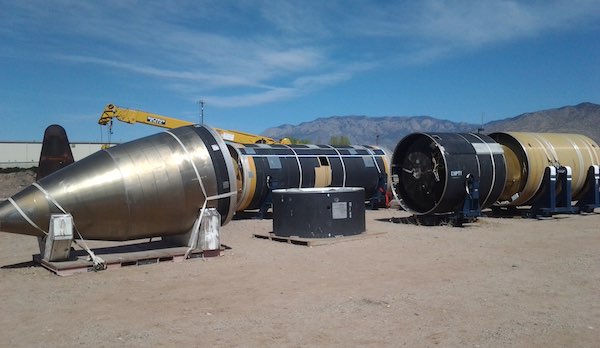|
|
 The National Museum of Nuclear Science and History, located in Albuquerque, New Mexico, showcases the history of nuclear science and technology. (Image courtesy of the author) |
Albuquerque’s Space Age jewels
Launch exhibits at the National Museum of Nuclear Science and History
by Joseph T. Page II
Monday, June 20, 2016

While the high-desert outpost of Albuquerque, New Mexico will be forever tied to nuclear weapons development and a television show about “peddling meth,” it also holds a treasure trove of artifacts relating (indirectly) to US space launch technology. Located along the edge of Kirtland Air Force Base, the National Museum of Nuclear Science and History showcases exhibits of personalities and technologies that shaped the Nuclear Age. Many of these systems, namely intermediate range and intercontinental ballistic missiles, were converted for use as space launch vehicles.
Originally established in 1969 as the Sandia Atomic Museum, the facility went through a formative period trying to find the proper way to tell the nuclear story. From 1973 to 2009, the museum was known as the National Atomic Museum. At its first location at Kirtland Air Force Base, the museum displayed artifacts unique to the United States nuclear weapon development program: hydrogen bombs lost over Palomares, Spain in 1966; the M65 Atomic Cannon (aka “Atomic Annie”); and the B-52B used in Operation DOMINIC in 1962, to name a few. The attacks on September 11, 2001, saw the museum close due to Kirtland’s heightened security posture. An alternate location was found in downtown Albuquerque, but due to space limitations, most of the hardware could not be displayed until the museum moved to its current location in 2009.
Aside from a Redstone rocket located in the parking lot entrance, the artifacts in the museum’s rear nine-acre (3.6-hectare) outdoor park dominate the scene. Missiles of all shapes and sizes are displayed around the fence perimeter, while aircraft (and a nuclear submarine’s sail) take center stage inside the yard.
 A Titan IIIC model hangs from the ceiling inside the museum. The transparent payload fairing shows IDSCP satellites on their dispenser. (Image courtesy of the author) |
Items specifically relating to space launch include a Thor IRBM on its mobile transporter, a dissected Titan II ICBM, a one-fifth scale of a Titan IIIC booster (complete with miniature (Initial Defense Communications Satellite Program satellites!), and remnants of a Peacekeeper ICBM. Space geeks will recognize the Thor as the legacy launcher for the CORONA spy satellite program and as the “granddaddy” of the Delta family of launch vehicles. The Titan II was a workhorse for NASA during the Gemini program. Finally, the Peacekeeper’s first-stage motor was converted for commercial usage as the Castor 120 for the Athena and Taurus launch vehicles.
To be clear, all exhibits are focused on the systems’ nuclear delivery mission, not specifically space launch. However, the ability to walk up (and touch?) a Peacekeeper missile, or see a Thor missile and transporter outside of California (Space Launch Complex Ten) or Ohio (National Museum of the United States Air Force) is a rare experience.
 A disassembled LGM-118A Peacekeeper (sans Mark 21 warheads) missile resides in the museum’s 9-acre rear lot. (Image courtesy of the author) |
Admission to the National Museum of Nuclear Science and History ranges from free (children 5 and under) to $12 (regular adult price). If you happen to be in the Duke City for the Biking Bad Tour, the Albuquerque Balloon Fiesta, or just driving along Route 66, the museum is worth a visit.
Joseph T. Page II is a former Air Force space and missile officer, and author of Images of America: New Mexico Space Trail. He can be reached at joseph.t.page.ii@gmail.com.
|
|


